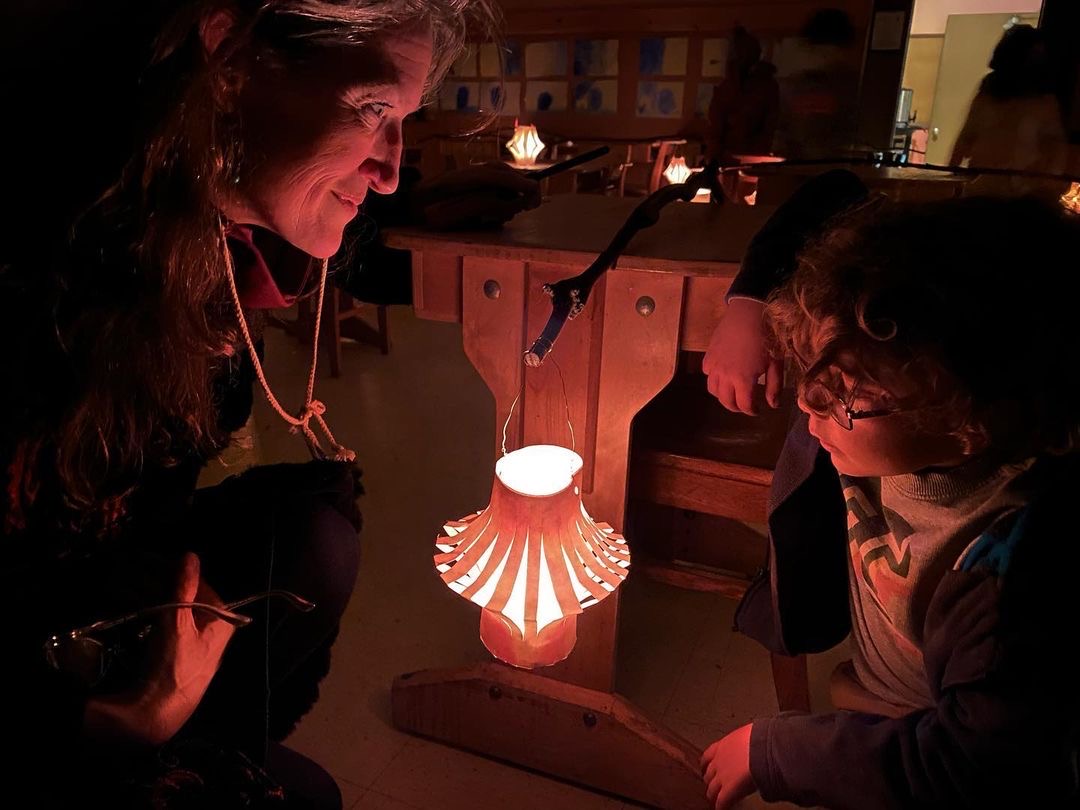Towards A Liberatory Community School Model
Dec 02, 2021
The system of education in the U.S. was built on foundations of white supremacist patriarchal structures. This is something we all, or certainly those of us impacted negatively by the implications of this statement, know by now. What is clear is that there is a need for a full leap in our consciousness around both systems of education and the purpose of education.
Currently, education helps solidify a particular set of social constructs; rules that we as a society agree upon participating in, in exchange for resources and power if we succeed. Education in the U.S. has created conditions where human beings are often meant to learn to submit to authority, check the “correct” box, and standardize our cognitive capacities in order to endure circumstances such as Amazon-fullfillment-style factory work, or prison labor, or other degradation that only values the life energy of human beings in their capacity as a workforce.
Don’t worry, this is not a theoretical conversation about Marxist theory. This is a lived example for those of us who wish to educate and raise up the next generations outside of systems of harm. In this wish, we are faced with a problem. Either we remove our children from the public education system entirely and recreate models of exclusion, or we submit our children to the public structure and do our best to change the system in small ways along the way.
An Alternative
Charter schools have been held up as an alternative, and my own oldest child attended a pretty spectacular one down the street from the public high school I taught at in Oakland. The trouble is, charters redirect funds from where they're most needed in the public sphere and into these privatized spaces. Charters are also not required to uphold core values of creating spaces that are radically inclusive.
Where are the accessible schools building towards outcomes of collective community-based wisdom? Schools with benchmarks that include evolving human thought, generation after generation, to make better choices as interconnected beings and stewards of the earth? Choices more in alignment with who we are in relation to this planet and to each other, to the diverse cultures and subcultures and lineages that populate each landscape?
At Wildcat Canyon Community School, a tiny startup born of the ashes of the East Bay Waldorf School in El Sobrante, California, there is a small community of families and teachers who are undertaking a great experiment to do just that. The “old-school” on this site had, after 40 years, crumbled… under the weight of a white-male-dominant board structure, a lack of racial and social justice and awareness, and a curriculum that (despite brilliant teachers’ efforts) held on to euro-centrism. This had led families to flee from the space, and this thriving community school had dwindled down to under a hundred families. The onset of the pandemic brought the school to its knees; the board and administration fired all the teachers, and the school shut down.
These teachers, from the strength of their own hearts and compassion for the children, took to their own backyards and parks and family homes, continuing to educate their students (outdoors and masked) in small pods. As a parent of one of these fortunate children, already grappling with the complexities of participating in a privatized school system, my child was thriving. I felt ill at ease.
Complexities
I myself am a product of a public school education, my oldest daughter a product of public schools and charters, myself an educator within systems of public education. So many brilliant and courageous individuals are working within the public sphere trying to educate in ways that lead students to agency and liberation... and yet... I was not seeing that opportunity available for my youngest daughter at any local community public school.
A fierce mama bear when it comes to protecting my children’s creative thinking, I took the opportunity to choose this alternate route. I, like most parents, sent my daughter to the best school I could access, grappling with tuition assistance processes and wrestling with our own white privilege (though my daughter has a mixed racialized identity).
For the first several years of our family’s involvement in the former school, any goal of this being a “liberatory education for all” looked more like radical disappointment and an uphill battle. Many powerful families left in order to preserve their children’s (and their own) well-being, especially families of color. When this former school fell to pieces, the beauty that emerged was that we families and teachers found out we were more than capable of putting together an education for our own children.
Another World Is Possible
I know as I write this, that this has not been the case for many families at this time, and so I report from a place outside the system to say that, as the poetic Zapatistas say, “Another World is Possible.” How do I know? Our determined little group of parents and teachers came together and re-envisioned the school based on a non-hierarchical cooperative structure. We started the process by paying attention to how we come together: transforming meeting spaces into thoughtful community experiences for collective growth and shared visioning. By including practices such as land acknowledgement and conocimiento practice into the structure of our meeting spaces, those structures and rituals began to inform how and why we take action, and “how we be together”. Land acknowledgement practice has led to a commitment to learn and partner with local tribal groups to pay indigenous land tax and eventually to rematriate much of the land that the school sits on. Conocimiento practice has led to our understanding of our community’s inherent and vast wisdom, strength, and capacity, and has led us to lead from our “heads, hearts and hands.” The desire to be non-hierarchical and cooperative has meant a commitment to restorative justice and conflict transformation for bridge-building in our interactions, and to follow a sociocratic model of governance, a co-op with operating circles that have autonomy over their own decision-making.
Bridging the Public/Private Sphere
A critical piece in the development of this new community school has been the model of a “gift economy”. This is the key element that begins to unlock some of the private/public school conundrum, from my perspective. The school operates as a pay-what-you-can model, where each individual family determines what they can contribute financially, energetically, physically and in-trade. This was a huge risk in walking our ethics, as we also wanted to ensure faculty and staff were fully compensated with good benefits and that we remain good land stewards to our school, which requires real resources.
A giant surprise for us? So far, we have come in over budget. People are giving all they can towards this vision of a brighter future for their children, and when they can not, the education is free. Is this a scalable model? I'm of two minds here. Yes, in that each community is certainly capable and worthy of developing and maintaining its own schools for their children. However, inside the current economic structure in which parents struggle to work many jobs, and having known this as a single parent myself, time and energy is limited. I think this is one long-term hindrance to such a dream-like community-led project.
Cultural Shifts in the Public Sphere
Having worked in the arena of cultural strategy for a few years now, what I have learned is that when it comes to transformative change, culture moves first and fastest. Culture leads, and is later followed by policies, politics and economics (shout out to my friends at The Center for Cultural Power for this articulation). My audacious hope is that if community model schools continue to emerge, such as ours (and such as Pear Tree in Oakland and Dr Rupa Marya's backyard outdoor nature school, and many more little sparkling seeds of schools) that eventually public schools and public education will find a way to be modeled after these spaces. That public education will be released from the shackles of standards and testing and school-to-prison pipeline routines and rituals, and that policies and economics will flow in the direction of the creation of more of these humanistic educational models. That as a society we will insist upon developing schools appropriate to inclusive contexts and cultures for growing the wisdom of our children…and everyone else’s.
Love Led Learning
A core question my dear friend Mariah Rankine-Landers asks often is, “Do your lessons love your students?” and the holistic facilitation for building a culture of belonging and restorative practice is one way to foster this love. The Wildcat Canyon Community School faculty are undertaking a process not just of professional development, but of professional “unlearning”. The faculty are shifting in their mindsets and practices to ask how they break patterns of harm, how to look deeply into their own lineages and identities as they carry these into their educational spheres. Developing creative practices and expansive imaginative spaces in the classroom (and beyond) are growing children’s collective cognitive capacities and taking us into solutions for a brighter future.
These are of course lofty goals, and right at this moment, we are simply a spark of a school.
It was just over one year ago when a few parents and teachers had a vision to reclaim this space and transform it into something even more beautiful. Today we are witness to the early harvest of a thriving community model, having reopened our doors (and windows and play structures and trails and fields) for our students just weeks ago. It’s still only semester one, of year one, of the Wildcat Canyon Community School...and much has yet to unfold in this experiment in doing school differently. What schools might your community dream into being?
Jessa Brie is the co-founder of Studio Pathways, an organization that leads for transformative education and pedagogy as cultural strategy.


